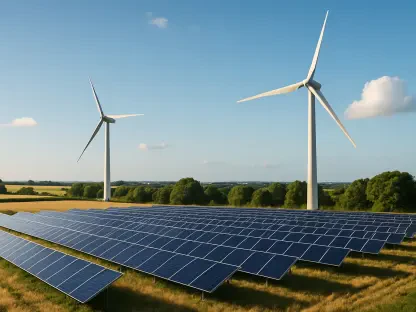Allow me to introduce Christopher Hailstone, a seasoned expert in energy management, renewable energy, and electricity delivery. With a deep understanding of grid reliability and security, Christopher offers invaluable insights into the evolving landscape of utilities in the United States. In this interview, we dive into the recent performance of a major Michigan-based energy company, exploring their financial growth, industrial expansions, clean energy investments, and the challenges of balancing regulatory demands with environmental concerns. We also discuss the future of large industrial loads and the ongoing operation of legacy power plants. Join us as we unpack these critical topics shaping the energy sector.
Can you walk us through the recent financial performance of CMS Energy and its electric utility arm in the third quarter of 2025?
Certainly. CMS Energy, through its Consumers Energy banner, reported a strong 16% year-over-year increase in operating revenue for its electric utility, reaching $1.68 billion in Q3 2025. This growth was largely driven by favorable weather conditions in Michigan and supportive regulatory developments. However, it’s interesting to note that electricity deliveries remained mostly flat at about 10.4 terawatt-hours on a weather-adjusted basis. This discrepancy highlights how revenue growth isn’t always tied directly to delivery volumes but can be influenced by external factors like rate adjustments and seasonal demand spikes.
What’s behind the addition of new industrial customers for Consumers Energy, and how are these contributing to their growth?
Consumers Energy has recently interconnected 450 megawatts of new industrial loads, which is a significant step toward their projected 900 megawatts of large-load growth by 2029. These additions include high-profile projects like semiconductor and solar cell factories near Saginaw, a Ford battery plant near Marshall, and an expanded data center south of Grand Rapids. These projects not only boost demand but also position the utility as a key player in supporting cutting-edge industries, aligning with broader economic development goals in Michigan.
Can you elaborate on the massive 9 gigawatt pipeline of industrial loads that CMS Energy is planning over the next decade?
Absolutely. CMS Energy has outlined a 9 gigawatt pipeline for large industrial loads, with 1 to 2 gigawatts already in the final stages of contracting. While specifics on many projects remain under wraps, there’s a notable unnamed data center that could draw up to 1 gigawatt by 2030. This pipeline reflects the growing energy needs of tech-driven industries, and the approval of a special tariff for loads over 100 megawatts by the Michigan Public Service Commission is making these deals more feasible, especially for data centers which are becoming significant energy consumers.
There’s been considerable debate about the continued operation of the J.H. Campbell coal plant. What’s your take on why CMS Energy anticipates ongoing support for its operation?
The J.H. Campbell coal plant, with a capacity of 1.5 gigawatts, remains in operation under a federal order, and CMS Energy expects this to continue under the current administration. The rationale is rooted in regional energy reliability needs, as the plant serves a broader area within the Midcontinent Independent System Operator’s North and Central regions. The costs, which amounted to a net loss of $80 million from May to September 2025 after market revenues, are being spread across the region to lessen the burden on Michigan ratepayers. It’s a complex situation balancing grid stability with economic and environmental concerns.
How is CMS Energy addressing concerns from ratepayer advocates and environmental groups regarding the Campbell plant?
CMS Energy is making efforts to ensure Michigan customers aren’t disproportionately impacted by the operational costs of the Campbell plant. By socializing these costs across the wider MISO region, they aim to protect local ratepayers. However, this hasn’t fully alleviated concerns from advocates and environmental groups who are worried about both the financial implications and the environmental impact of prolonging coal usage. CMS is in a tough spot, navigating these criticisms while adhering to federal directives and working toward broader clean energy goals.
Consumers Energy has ambitious plans to invest $13.7 billion through 2029. Can you break down how this investment will shape their future?
This $13.7 billion investment is a cornerstone of Consumers Energy’s strategy through 2029. About $5.2 billion is earmarked for renewable energy projects, aligning with Michigan’s goal of net-zero emissions in the power sector by 2040. Another $8.5 billion will focus on distribution-level reliability and resilience, ensuring the grid can handle growing demand and extreme weather. This dual focus on clean energy and infrastructure upgrades shows a commitment to both sustainability and service quality, preparing for future load growth from industrial customers.
What role do you see state regulations and clean energy policies playing in supporting Consumers Energy’s goals?
Michigan’s regulatory environment has been quite supportive of Consumers Energy’s ambitions. The Michigan Public Service Commission has approved significant renewable capacity additions, including 8 gigawatts of solar and 2.8 gigawatts of wind, as part of the utility’s long-term plans through 2035. Additionally, state policies pushing for coal retirement and net-zero emissions by 2040 provide a clear framework for investment in cleaner technologies. Regulatory approvals for rate increases and capital requests also help fund grid reliability projects, creating a constructive backdrop for the utility’s transition.
What is your forecast for the future of large industrial loads and their impact on the energy sector in Michigan?
I anticipate that large industrial loads, especially from data centers and manufacturing hubs, will continue to be a major driver of energy demand in Michigan over the next decade. With a 9 gigawatt pipeline and projects already in advanced stages, we’re looking at a transformative shift in how utilities like Consumers Energy plan their capacity and infrastructure. The challenge will be balancing this growth with sustainability goals, ensuring grid reliability, and managing costs for ratepayers. It’s an exciting time, but it will require innovative solutions and strong collaboration between utilities, regulators, and industry stakeholders to get it right.









